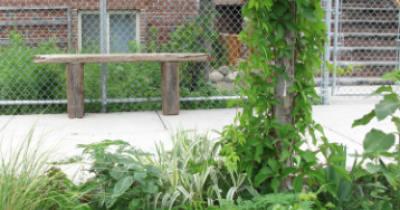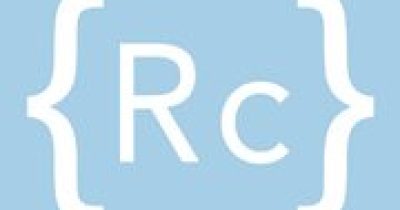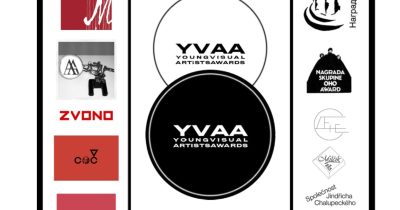Show: Minus the sun
Curator: Marie Salomé Peyronnel
Room 2360
Artists: Sophia Narrett, Radouan Zeghidour, Pauline Guerrier, Albert Palma, Alexandre Silberstein, and Aurélie Pétrel.
Nightmares and bedtime fears, faith and prayers, boredom, loneliness, love, even illicit exploration of the city… The dark night acts as the black mirror revealing our true self, or at least, an aspect of who we are/want to be. How is an artist’s production impacted by the invisible feelings and secret experiences we go through when the sun sets? Plans, footprints and fingerprints, stories to tell, private memories, meditation… What are the traces we choose to leave behind at dawn? How does an artist keep records of night? What are their « night visions »?
Artists:
Sophia Narrett is an American Brooklyn-based artist working with embroidery. Her work is ultimately about love. She tries to honestly depict her fantasies, desires and fears in a way that does justice to her feelings, while also pursuing an awareness of the social implications of images. « Each piece begins as a narrative premise shaped by my experiences or thoughts. I then illustrate these stories by embroidering from collages built with source images gathered on the Internet, iPhone photos I’ve taken, and screenshots from movies or TV. The original context of the images provides a way to complicate the initial narrative and to connect to larger social situations. » She is interested in the ways that adults play, whether their games are consensual or manipulative, and the emotional results of escapism.
Narrett holds a MFA in Painting from Rhode Island School of Design. Recently, her works have been shown at Freight + Volume and 315 Gallery in New York. I will show 5 embroideries evoking her love and sex life as much as her fantasies. In a way, despite her old school medium, her work is a hymn to women empowerment and freedom. We will show 5 small pieces (not bigger than an iPhone), displayed as a tarot set.
Albert Palma (b.1947, Algeria) is a former woodcutter and a renowned master of martial art. He started drawing in 2003 and was quickly acclaimed by the intellectual world and by other artists, from iconic illustrator Moebius to philosophers Henry Bauchau and Jean-Luc Nancy. The latter has recently devoted a poetic essay to Palma, Quand tout arrive de nulle part (éditions Manucius 2015.) and wrote about his artworks: «If some mountains, seas or leaves appear, or branches, lightning, skin or fabrics, it’s just a meeting with your memories, feelings and dreams, but his hand in fact only meets space, lying above it.»
Palma’s singular artworks draw from the roots of Modern Art (from Paul Klee to Arte
Povera), as well as the calligraphy tradition or ethic of the «right gesture», cultivated in Asia and carried by the «wu wei» principle, this suspension of action without which, paradoxically, nothing could be accomplished. The French artist can stay working for up to 72 hours on a drawing, which can need as many as 100 000 strokes. They are only quill, ink and paper but the quest for the infinitely small joins the quest for the infinitely large. There are only dots, traces and lines, but they are carried and led by a patient breath. One of his pen and ink drawings will be shown at SPRING/BREAK art show – Untitled, 29.5 x 43, inches, 2013.
Pauline Guerrier (b.1990, France) explores body prints and traces, from palm lines and
fingerprints to historical and anthropological ones. She imagined for SPRING/BREAK art show what would the body prints of a universal prayer look like, as if people from the three main religions (Islam, Judeo-Christian religion and Buddhism) were praying on the same carpet. She also drew 2 moons with her fingerprints, as part of her series «Cycles». She works and lives in Paris and graduated from Les Beaux Arts de Paris in 2014. Last year, I presented her performance Dans un instant at SPRING/BREAK, which was mentioned by Hyperallergic and Creators Project as one of the highlights of the fair: a dancer was moving with a large hoop filled with ink on gigantic canvas, creating a large painting that was then cut in pieces and given to the audience.
Radouan Zeghidour (b.1989, France) explores the parallel between secret and sacred and finds inspiration in the underground world, from Hades and Janus figures of the Greek and Roman mythology – respectively symbols of death and renewal- to the catacombs and tunnels under Paris, where Zeghidour builds mesmerizing illegal installations. His studio practice is based on documentation and memory of his lonely night explorations of the city undergrounds. For his piece Terrain Vague à l’âme, he created a material with latex, pigments and stone dust to take the imprint of the door of an old Parisian subway wagon. And a picture is embedded in this unique transparent and colorful “skin”. The result looks like a Church window. The painting’s title evokes some melancholy provoked by urban landscapes as much as loneliness and soothing feelings Zeghidour experiences during his night trips.
Radouan Zeghidour will graduate from Les Beaux Arts de Paris next May but has already won the 2014 Thaddaeus Ropac Award and has been one of the finalists of the Prix Découverte of Palais de Tokyo for 2 years in a row. His works have been exhibited in Paris, London and New York and some were also included in Marie Salomé Peyronnel’s exhibition at the 2016 edition of SPRING/BREAK ArtShow.
Aurélie Pétrel (b. 1980) Aurélie Pétrel graduated from the National School of Fine Arts (ENSBA) of Lyon, France, in 2006. Through theory (she teaches), experimentation and collaboration with a scenographer(in her duo Petrel-Roumagnac), her photographic practice is focused on the renewal of photography. In her work, the production of the image is as much important as the image itself. Any immediate reading of her pictures is misleading. In Europe, she is represented by Galerie Houg (France) and Gowen Contemporary (Swiss.)
Alexandre Silberstein (b.1990, France): Consumed with American dreams and culture, from Sports to Hollywood, his mixed media installations are to be seen/read as storyboards. The object-aesthetic is key to Silberstein’s artworks since he plays with the thin line between symbolic objects and commercial ones. In the group show Minus the sun, I will show his series of pictures of staged sleepers, which is a detail of a bigger installation made for Fondation Emerige in Paris, as well as two minimalist drawings framed with wax. Those drawings represent fragments of stars and recall as much the Death Star in Star Wars as a torn page from a notebook that could be the clue to a great adventure in a kid movie.




